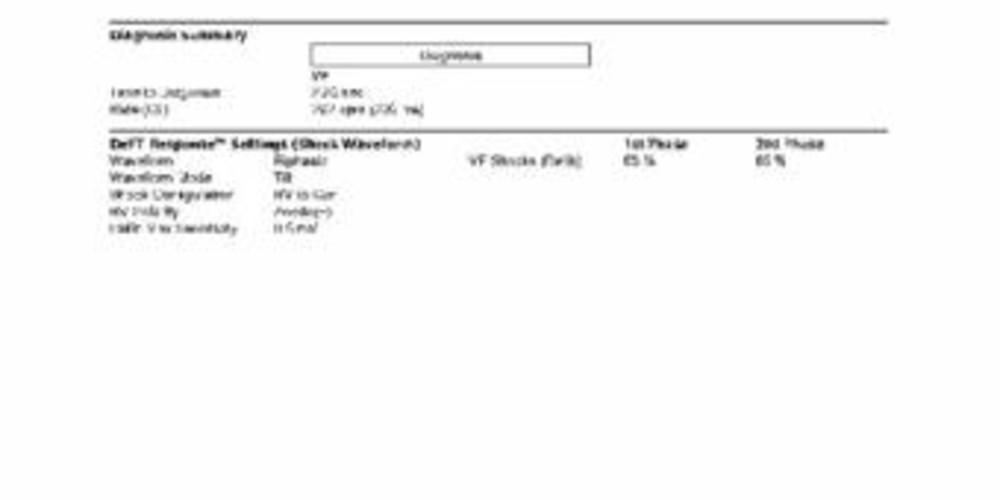Induction of ventricular fibrillation by direct current
This 54-year-old man suffering from ischemic dilated cardiomyopathy, with a 30% LVEF and 120-ms QRS, underwent implantation of a Unify triple chamber ICD. VF was induced by DC at the end of the implantation procedure.
Main device programming (during the induction procedure)
- Single VF zone for rates >187 bpm
- 12 cycles in the VF zone were needed for the diagnosis
- Sensitivity programmed at 0.5 mV
- First shock at 25 J, second shock at 40 J (maximum strength).

Text (trace 2a)
The narrative suggests the occurrence of a non-sustained VF episode at a rate of 292 bpm, which is the mean rate of the last 4 cycles before the trigger and the arrhythmic diagnosis; the shock therapy was cancelled.
Trace
- Rhythm detected in the atrium and biventricular stimulation (AS-BP);
- DC delivered for 2 sec;
- A 600-ms blanking period follows the induction;
- Ventricular arrhythmia; the first 3 short cycles are unclassified (-): the analyzed intervals and the 4 previous averaged intervals are not concordant;
- First interval classified in the VF zone (F) (concordance between instantaneous and average intervals);
- At the third cycle in the VF zone, the device switched to DDI mode, the programmed mode during the episode;
- VF episode detected after 12 ventricular cycles in the VF zone, and trigger of the EGM recording (Trigger); start of the capacitors charge;
- Spontaneous termination;
- Diagnosis of return to sinus rhythm made by the ICD and interruption of the capacitors charge; in this patient 5 VS or BP cycles were needed; the nominal programming of “sinus return” is 3, 5 or 7 cycles;
- Interruption of the EGM 4 sec after the diagnosis of sinus return.
Text (trace 2b)
The narrative suggests the occurrence of VF at a rate of 279 bpm. A 25 J shock was delivered; the programming and the measurements describing the shock are shown; the programming was nominal and the shock was biphasic, with a fixed tilt (65% for both phases), the anode in the right ventricle and the shock delivered between the right ventricle and the pulse generator; the shock impedance was 75 Ohms, the charge time 4.4 sec, and the pulse duration 7.7 ms.
Trace
- Rhythm detected in the atrium and biventricular stimulation (AS-BP);
- Repeat delivery of DC for 2 sec;
- Induction of ventricular arrhythmia; the initial cycles were unclassified;
- A cycle marked “-“, occurred after a cycle that was undetected because of low amplitude. This caused the measurement of a long (359 ms) cycle, which was outside the VF zone. However the average of the 4 previous cycles remained in the VF zone. Because of this non-concordance that cycle remained unclassified;
- The device switched to DDI mode during the episode;
- Diagnosis of VF after 12 cycles that were detected and classified in the VF zone; onset of the capacitors charge;
- Delivery of 25 J shock after confirmation (the shock was synchronized with the second cycle following the end of the charge, the instantaneous and averaged interval of the last cycle in the VF zone);
- Diagnosis of return to sinus rhythm after 5 consecutive VS and switch to the post-shock DDD pacing mode.







Depending on the manufacturer, 3 different methods can be used to induce VF during implantation of an ICD: